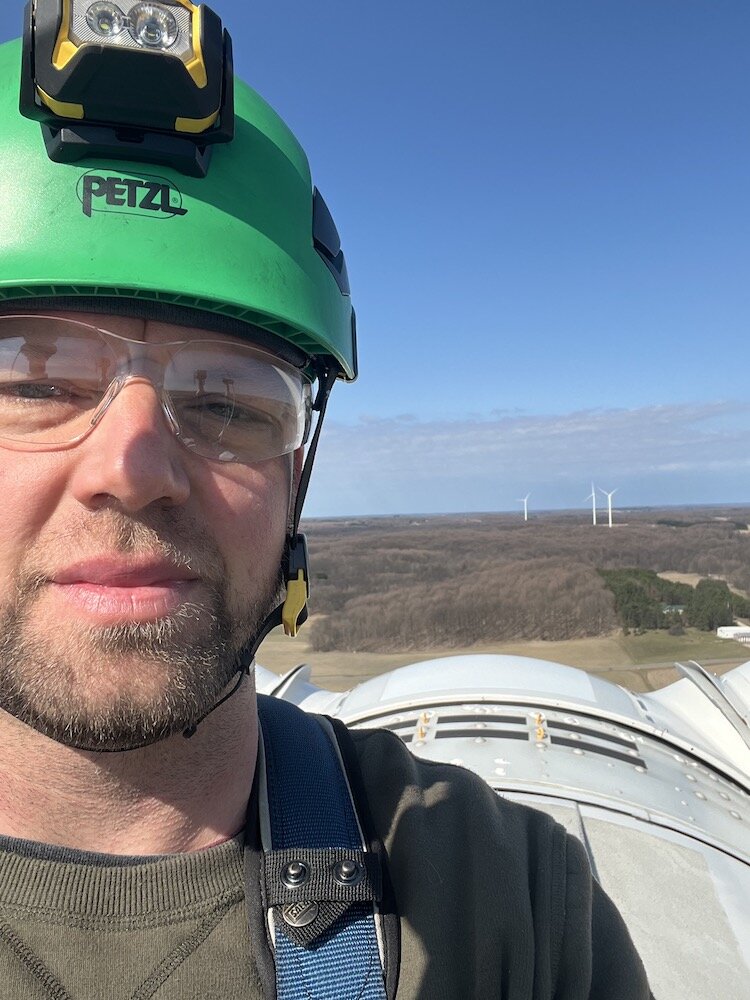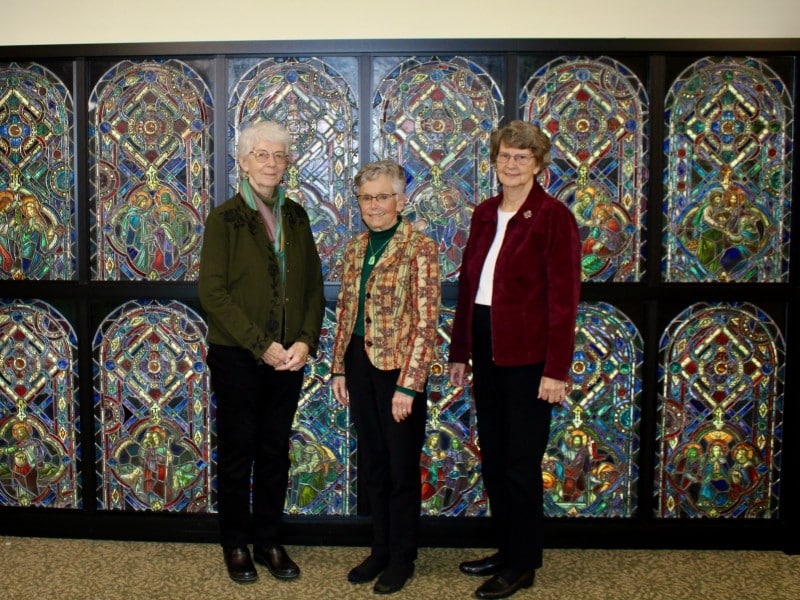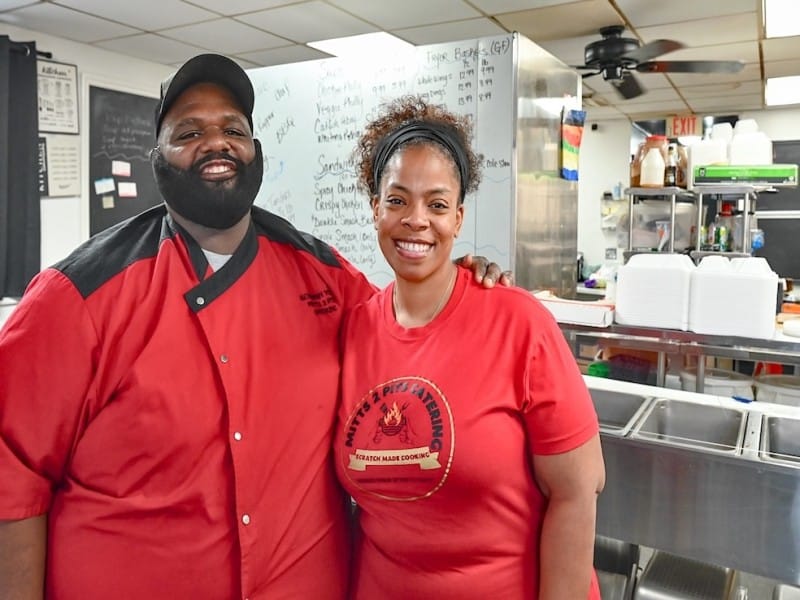Women and wind: KVCC academy training women for sustainable future in wind industry
Women are helping harness wind as a renewable energy source thanks to Kalamazoo Valley Community College's nationally-recognized Wind Turbine Training Academy.
Editor’s note: This story is part of Southwest Michigan’s Second Wave’s On the Ground Kalamazoo series.
KALAMAZOO, MI — Wind power is America’s largest source of renewable energy and women are helping to harness it at greater rates than ever before.
Kalamazoo Valley Community College’s Wind Turbine Technician Academy offers a unique local opportunity for anyone looking to break into the growing renewables industry. This program, which attracts students not only from Kalamazoo but from across the country and around the world, is designed to equip its participants with the practical skills needed for a successful career working with wind energy.
When Second Wave spoke to one of KVCC’s Wind Turbine Training Academy’s recent graduates, Anna McClurkan in July she answered the call from Beaver County in southwestern Utah where she now lives and works on the Milford Wind Corridor Project, commonly known as Milford Wind Farm. McClurkan, who usually goes by the name Anna Mc, is one of six technicians responsible for monitoring and maintaining the 165 massive wind turbines located on the massive farm, and the only woman on her team.
McClurkan is no stranger to climbing. She used to teach campers at Sherman Lake YMCA in Augusta, Michigan how to harness up and descend safely, belaying them to the ground from the climbing tower or indoor climbing wall in the gymnasium. Now, she has transferred that set of skills to even higher heights by participating in KVCC’s Wind Turbine program after seeing an advertisement online that piqued her interest. “I just saw it and thought, wow that’s right here in my hometown!” she says.
After that, beginning the program was an easy process. An advisor helped ensure McClurkan had proper work attire (steel-toed boots, and fire-resistant clothing) and made sure she knew what to expect when classes began.
Catching the wind: KVCC one of nation’s top programs
KVCC’s Wind Turbine Technician Academy (WTTA) has earned a reputation as one of the top programs in the country and is recognized for its rigorous, hands-on training. They have run training sessions for students, instructors, and employees from around the world. The academy’s instructional manager, Lief Dozema, was a graduate of the program’s inaugural class in 2009 and joined the academy as an instructor in 2013 after working professionally as a technician on the Oregon-Washington border.
“It’s just so rewarding to see students walk through the process. They start overwhelmed, thinking it’s impossible, but by the end, they’ve gained incredible skills and are doing things they never thought they could,” says Dozema.
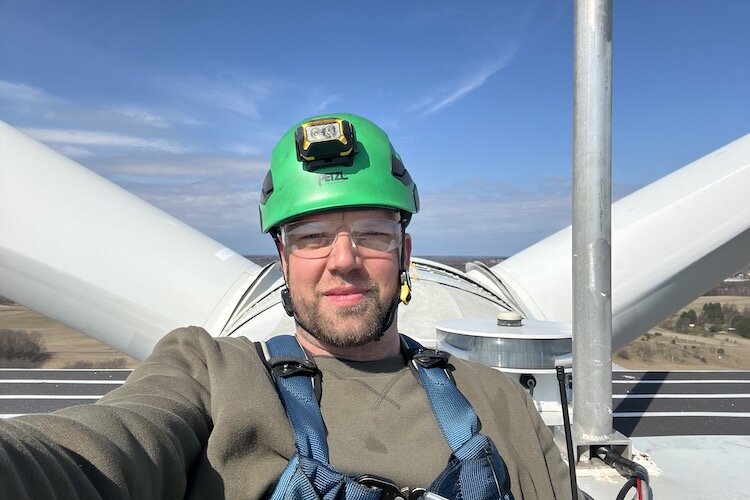
WTTA is a 24-week, competency-based program that starts with intensive rescue training where students practice different emergency scenarios and learn to safely rescue themselves and their partners off of ladders and how to safely evacuate from a tower.
The next part of the course is followed by comprehensive instruction in electrical safety, theory, mechanical systems, and hydraulics. Students spend about 20% of the class focused on learning theory, 70% engaged in hands-on activities in the lab, and the remainder focused on experiential fieldwork. During the hands-on portion of the course, students work on operating and repairing four functioning two-megawatt wind turbines which the school operates in McBain, Michigan.
Because McClurkan was one of only two students in her unusually small class session (she was also the only woman), she had several opportunities to make site visits to work on the McBane turbines during her time at the KVCC academy.
What’s it like to work on a turbine? Having a ‘healthy fear of heights’
That field experience came in handy recently in early August when McClurkan climbed up once again into the clouds, ready to perform a “hub jump” which is where the technician exits the wind turbine’s nacelle (the enclosure at the top of a turbine where the machinery is housed) and steps onto the turbine’s hub (the central part of the rotor to which the blades are attached).
McClurkan describes the feeling of being several hundred feet up inside a turbine as feeling like you’re on a boat rocking gently in the waves “It has a little bit of a sway,” she says.

McClurkan may have gotten used to regularly scaling upwards the height of a 30 to 40-story building, but despite her familiarity with the task, she says she has retained what she likes to think of as “a healthy fear of heights.”
On this particular day, she ascended up and up putting one foot above the other as she scaled the ladder hidden inside the wind turbine’s vertiginous tower. She was careful not to look down at the dizzying height, hundreds of feet below. As she opened the hatch and looked out at the vast canvas of scrubby grassland of the Escalante Valley some 25 stories below her and prepared to climb up and out into the sky, she suddenly realized something was wrong.
Thick clouds were emanating from machinery inside the hub itself. Rather than fluffy and white they were dark and billowing, like storm clouds against the wide Utah sky. The smell was horrible, “like piles of burning trash,” she says,
After quickly locating the source of the acrid-smelling smoke, McClurkan and her climbing partner were able to flip off the turbine’s electrical breakers to avert a more serious disaster before descending safely back down to the solid earth below.
In high-stakes situations, where even the smallest mistake can lead to serious consequences, this ability to stay calm and act decisively under pressure is crucial.
Although McClurkan says most days she does more routine maintenance, her swift response in an emergency underscores the importance of rigorous training for wind turbine technicians. The job routinely requires both a mental and physical balancing act, equalizing the thrill and excitement of working at heights with the ever-present need for safety, vigilance, and precision work.
Renewables are a growing industry
Demand for renewable energy in the United States is on the rise, driven by growing awareness of climate change and advancements in technology, the U.S. now gets a larger portion of its energy from renewable sources than ever before, with wind energy topping that list.
According to the U.S. Department of Energy’s most recent Wind Market Report, wind power is one of the fastest-growing and lowest-cost sources of electricity in America with wind playing an increasingly important role. The wind industry as a whole is poised for rapid growth which is leading to an increased need for skilled technicians to maintain and service the growing amount of wind turbine infrastructure in the United States.
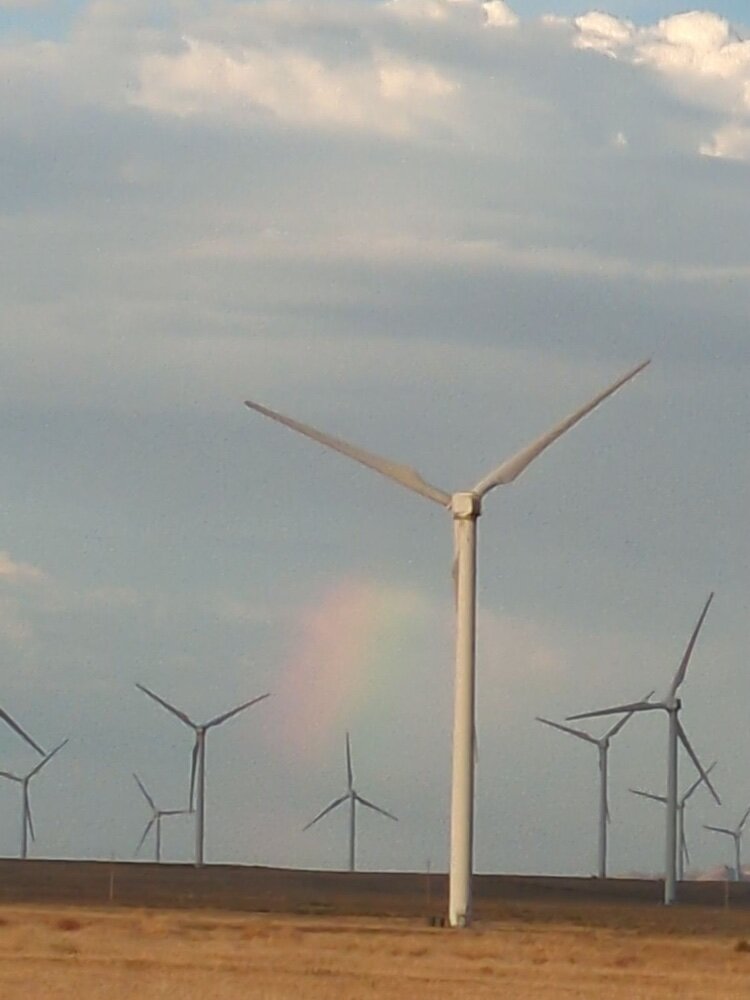
The U.S. Bureau of Labor Statistics estimates a 45% growth rate in the need for wind turbine service technicians from 2022 to 2032, making it one of the fastest-growing occupations in the country. On average, 800 new openings for wind turbine technicians are projected each year over the next decade.
This surge is due in part to the rapid expansion of wind energy infrastructure across the nation thanks to the passage of legislation such as the 2022 Inflation Reduction Act, which encourages companies to invest in clean energy technology.
According to the International Renewable Energy Agency (IRENA), women make up less than a third of renewable energy workers worldwide and represent only 21% of the workforce in wind energy — an even lower percentage than in traditional oil and gas jobs. Women in this field often have to overcome the cultural stigma of entering a traditionally male-dominated industry, fight for equal pay, and prove themselves in what has long been considered a masculine domain.
Women and wind: challenges of a male-dominated industry
For many women in the wind industry, the challenges of a workday can start before the sun even rises. Job sites for renewable energy are often in remote locations, and work hours are long. Finding safe transportation and reliable childcare available before dawn can be a huge impediment for many women who might be looking to break into the industry.
Being the only woman on the job “definitely required me to have a different level of grit,” says McClurkan. “Being in the minority can be challenging. There’s always that extra layer of thinking, ‘Are they treating me this way because I’m a woman?’ or ‘Do I have to prove myself the extra mile because I’m a woman?’”
As one of the few women in this expanding industry, McClurkan is the type of person who doesn’t think twice about forging her path. It’s no surprise that she’s found a steel-toed foothold in this largely male-dominated industry. She is one of relatively few women who work in the industry and one of only a handful of female technicians in her whole company.
McClurkan says she’s had coworkers acknowledge that while they’ve only worked with a handful of women, those women have often progressed quickly. “So that’s an advantage in another way because companies don’t usually have a lot of female techs, and that’s something they’re looking for,” she says.
As the program grows, KVCC’s Wind Turbine Technician Academy hopes to see an increase in female students participating in their courses.
The program has historically enrolled at least one woman in each of its class sessions, which run twice per year; trainees are predominantly male.
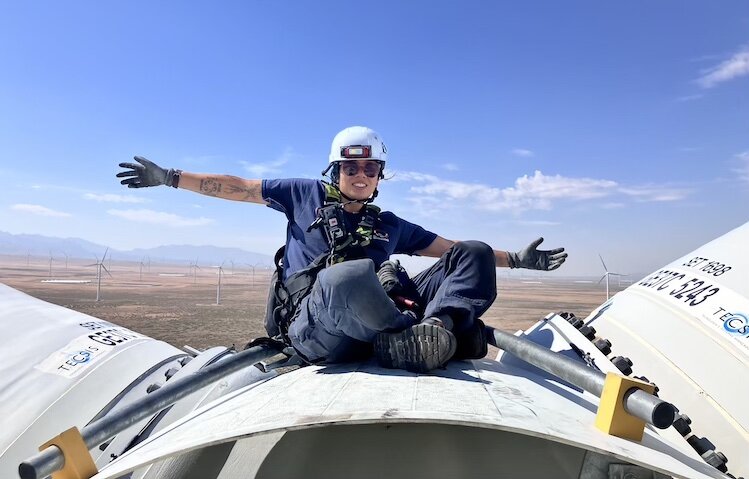
“Almost all skilled trades professions have a shortage of women,” according to KVCC’s Wind Turbine Training Academy program coordinator Sharon Jackson, who added that she hopes to focus on actively recruiting more women into the academy in the future.
“The academy has run social media campaigns focused on recruiting women and veterans in the past and I will be making an effort to reintroduce the campaigns moving forward,” says Jackson.
For McClurkan, and other women who may choose to follow in her footsteps, a career in renewables seems full of possibilities.
“It’s a really exciting and rewarding career. It’s adventurous, challenging, hands-on, and outdoors. And there’s always more to learn in every aspect,” she says.
McClurkan says she’s learned about a new position that’s recently opened up in the company and she’s interested in applying. It seems she plans to keep on climbing.

